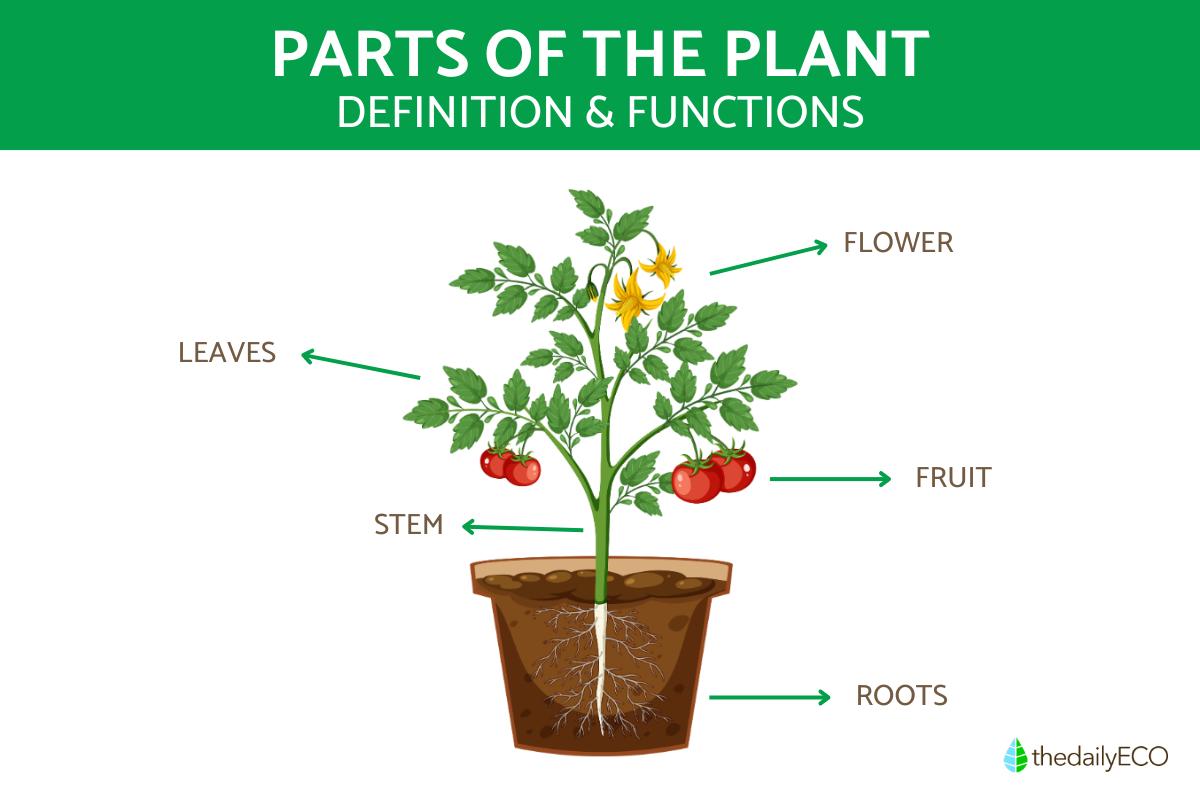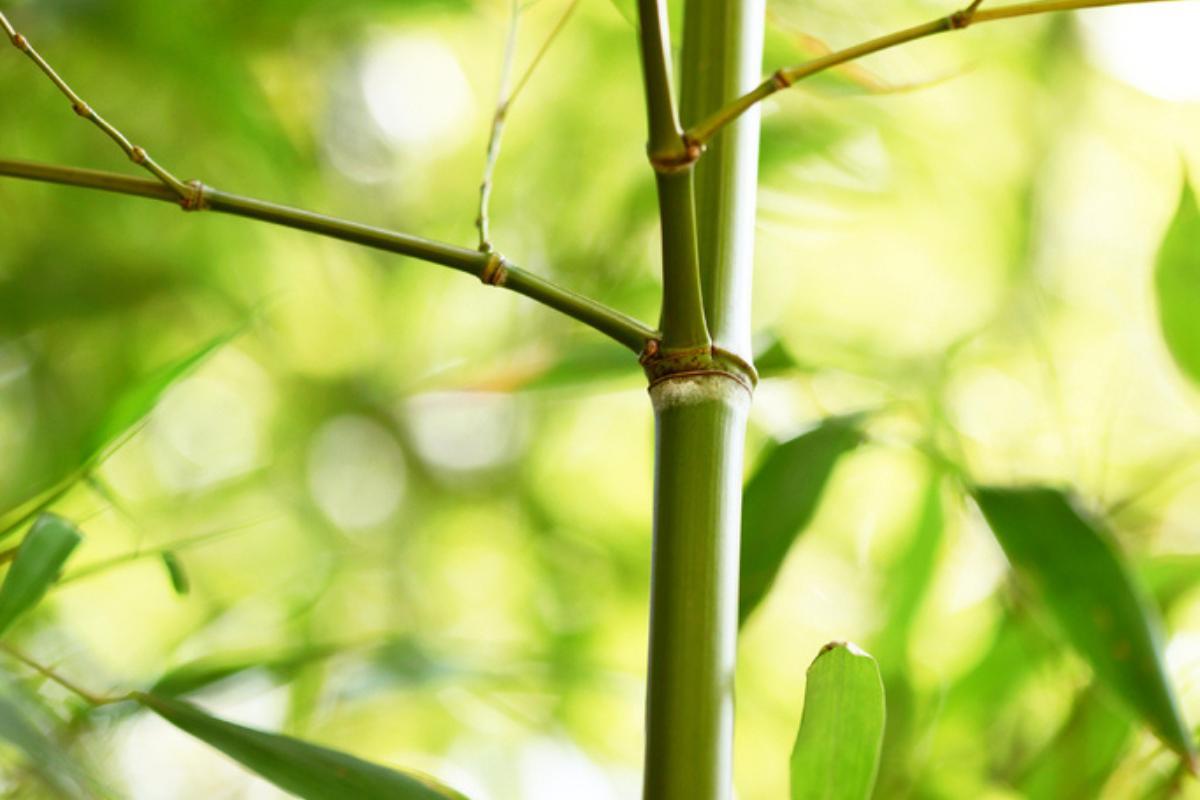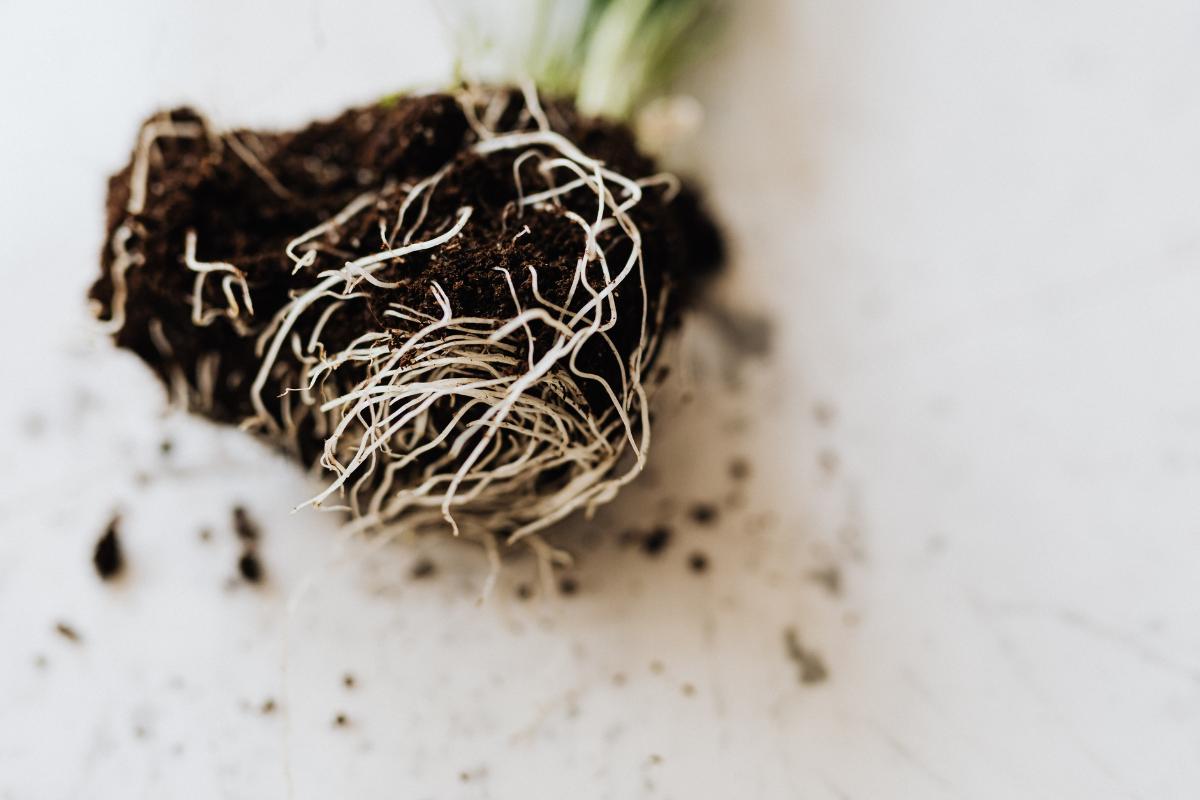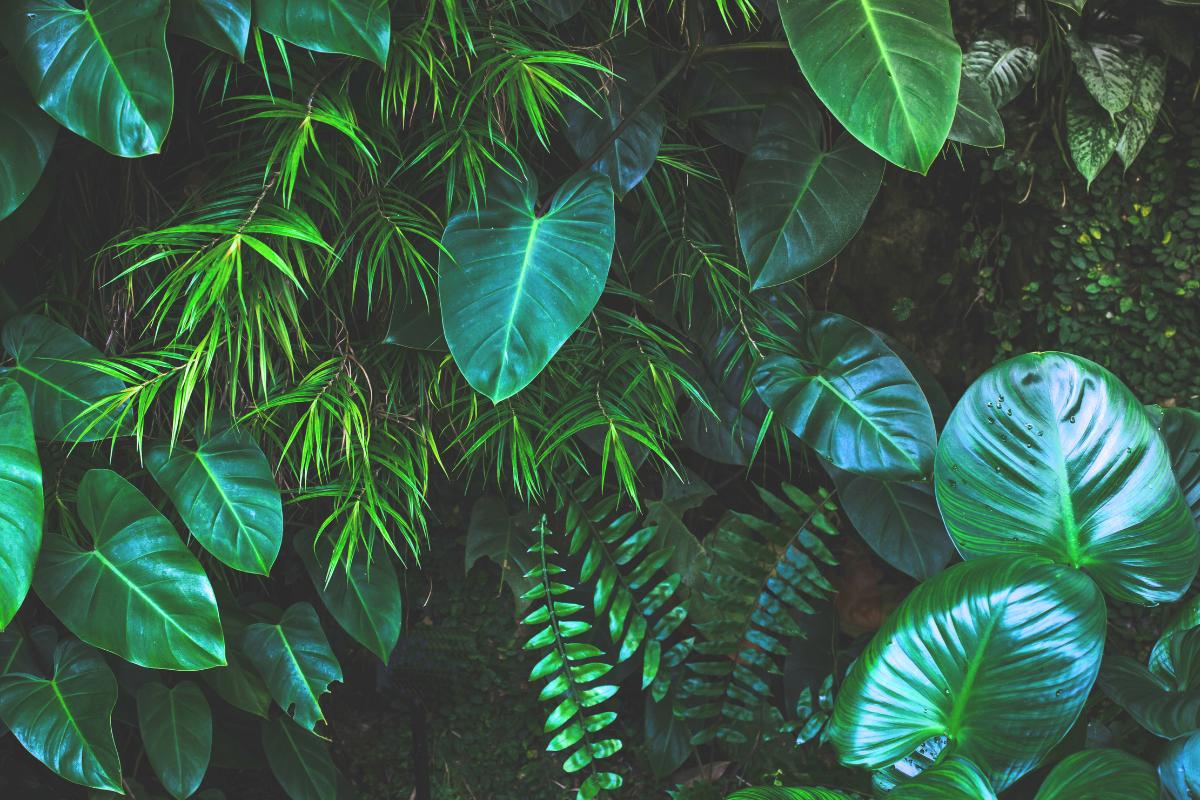Parts of a Plant and Their Functions


Plants may seem simple at first glance, but each part plays a crucial role in their survival and success. We can easily identify a tree's trunk or a flower's bloom, but delving deeper reveals a fascinating world of specialized structures. From the anchoring power of roots to the intricate dance of flowers attracting pollinators, every plant component has a unique function.
This article by thedailyECO explores the 5 essential parts of a plant and their functions.
The 5 parts of a plant
Plants typically consist of five main parts:
- Roots
- Stem
- Leaves
- Flowers
- Fruits
These five parts work together to ensure the survival and reproduction of the plant species. We will explore each of these parts in more detail below.
Stem
The stem is a vital organ for vascular plants. It provides structural support, elevating leaves, flowers, and fruits. Stems exhibit positive phototropism, meaning they grow in the direction of sunlight.
Types of stem
They can be categorized into two main types: subterranean and aerial.
Subterranean stems, like tubers and rhizomes, are found underground and often serve storage or reproductive functions.
Aerial stems, encompassing those found above ground on trees, shrubs, and herbaceous plants, provide structural support and a platform for leaves, flowers, and fruits. These aerial stems exhibit a diversity of forms, including upright, creeping, climbing, and twining varieties.
One of the primary functions of the stem is the transportation of water and dissolved nutrients. Specialized vascular tissues within the stem facilitate the movement of raw sap, rich in minerals and water, from the roots to the leaves. Conversely, these tissues also transport processed sap, containing sugars produced through photosynthesis in the leaves, to other parts of the plant.
Stem functions
Some stems act as storage organs for food and water. Examples include tubers like potatoes, rhizomes like ginger, and bulbs like onions. These thickened underground stems store carbohydrates, proteins, and other nutrients that the plant can use during dormancy or periods of rapid growth.
Certain stems can also be used for vegetative reproduction. Stems like runners (strawberries), stolons (lilies), and tubers (potatoes) can develop into new independent plants.
Finally, while leaves are the primary site for photosynthesis, some green stems can also contribute to this process.
Have you ever noticed how some plant stems bend? This interesting phenomenon has a scientific explanation! Check out this article to learn why it happens.

Roots
Roots are the underground organs of a vascular plant. Roots are fundamental organs in plants, serving essential functions such as absorbing water and nutrients from the soil and providing structural support.
Types of roots
They can be categorized in several ways:
- Types of roots based on structure: plants typically have either taproots or fibrous roots. Taproots are a primary vertical root that extends deep into the soil, while fibrous roots form a dense network of thin roots close to the soil surface.
- Types of roots based on growth direction: Adventitious roots are those that arise from non-root tissue, often serving specialized functions. They include aerial roots, which grow above ground and may anchor the plant or absorb moisture from the air.
Root functions
Roots fulfill critical roles in plant physiology. They absorb water and nutrients through specialized structures like root hairs and transport these substances to other parts of the plant via the stem.
Additionally, roots anchor the plant in the soil, providing stability and support. Some roots, such as aerial roots, may have additional functions like providing anchorage to other structures or aiding in gas exchange.

Leaves
Leaves are thin, often green structures that emerge from plant branches or stems. However, leaves come in a wide variety of shapes, sizes, and colors. They play a vital role in a plant's survival by performing several key functions.
Types of leaves
Leaves come in two main types:
- Simple leaves: these have a single, undivided blade attached to the stem. Examples include maple (ovate) and pine (acicular) leaves.
- Compound leaves: these have a divided blade with multiple leaflets branching off a central vein. Clover and poison ivy are examples.
Another way to classify leaves is by how they handle winter.
- Evergreen leaves: These stay on the plant year-round, like pine needles.
- Deciduous leaves: These change color and fall off in autumn, like maple leaves.
Leaf functions
Leaves are the primary stage for photosynthesis, a process where sunlight is captured to convert carbon dioxide and water into sugars, fueling the plant's growth and development.
They also play a vital role in gas exchange. During the day, they absorb carbon dioxide from the air and release oxygen as a byproduct of photosynthesis. Conversely, at night or in darkness, leaves may take in oxygen and release carbon dioxide through respiration.
Finally, leaves also regulate water balance through transpiration, where water evaporates from their surfaces. This process helps maintain internal water pressure and aids in nutrient uptake from the soil.
Want to learn more about the amazing diversity of leaves and what they do? This article delves into the different types of leaves and their functions.

Flower
Flowers are the reproductive organs of flowering plants (plants in the division Angiospermae). They are not essential for the plant to survive on its own, but they are crucial for sexual reproduction and seed production. Their appearance is incredibly diverse, with a vast array of shapes, sizes, colors, and even scents, all specifically designed to attract pollinators.
Types of flowers
There are countless varieties of flowers around the world, each with unique characteristics and adaptations. Here are some common types:
- Bell-shaped: wide at the base, narrowing upwards (foxgloves, Canterbury bells).
- Funnel-shaped: narrow tube with a flared top (petunias, morning glories).
- Star-shaped: petals radiating outwards from a center (irises, buttercups).
- Composite: clusters of tiny flowers forming a single bloom (sunflowers, daisies).
Beyond these, there are irregular flowers with odd shapes for specific pollinators (orchids) and strap-shaped flowers like irises.
Flower functions
The primary function of flowers is to facilitate sexual reproduction in plants, ensuring the continuation of the species. Here's a breakdown of how flowers achieve this:
Flowers use their vibrant colors, sweet scents, and unique shapes to attract animals like insects, birds, and bats. These creatures act as pollinators, unknowingly transferring pollen grains from one flower to another.
Pollen grains, containing sperm cells, are produced in the stamens, the male reproductive organs of the flower. When a pollinator visits a flower in search of nectar or pollen for food, some pollen grains may brush off onto its body. As the pollinator moves to another flower, these pollen grains can be deposited on the stigma, the female receptive surface of the flower.
If the pollen grain is compatible with the flower it lands on, it germinates on the stigma, sending a pollen tube down the style (stalk) to the ovary. The ovary contains ovules, which will eventually develop into seeds. The sperm cells travel down the pollen tube and fertilize the ovules in the ovary.
After fertilization, the ovules mature into seeds, containing the embryo of the new plant. The ovary ripens into a fruit, which protects the seeds and aids in dispersal. Fruits can be fleshy and attractive to animals, encouraging them to eat the fruit and spread the seeds in their droppings. Others may be lightweight and dry, allowing them to be carried by the wind.
Hummingbirds are vital pollinators, but some flowers are more adept at attracting them than others. Discover which plants these tiny birds favor in this next article.

Fruit
Fruits are the ripened ovaries of flowering plants (angiosperms) that contain seeds. They develop after a flower has been fertilized. Keep in mind that fruits are a specific reproductive structure found only in flowering plants, also known as angiosperms. These are plants that reproduce using flowers and seeds that develop within an ovary.
Types of fruits
Fruits come in amazing shapes and sizes, with different ways to develop and disperse their seeds. Here's a quick rundown:
Simple Fruits: Berries (tomatoes), drupes (peaches), legumes (beans), nuts (acorns), capsules (poppies) are all variations of single flowers developing into fruits.
Aggregate Fruits: Raspberries and blackberries come from clusters of flowers that fuse together.
Multiple Fruits: Pineapples and figs develop from a single inflorescence (flower cluster) that fuses into a single fruit.
Fruit functions
Fruits serve two main functions in the plant kingdom:
The first on is seed protection. The fruit wall acts as a protective enclosure for the developing seeds within. This shield safeguards the seeds from various threats such as physical damage, harsh environmental conditions, and predators.
The second main function is seed dispersal. Once the seeds are mature, the fruit plays a critical role in getting them to new locations suitable for germination and establishing new plants. There are several ways in which fruit can achieve this.
Firstly, many fruits have bright colors, sweet smells, or fleshy textures that entice animals to eat them. As animals consume the fruit, the seeds pass through their digestive system and are deposited elsewhere in their droppings. This helps disperse the seeds away from the parent plant, reducing competition for resources among seedlings.
Some fruits are lightweight or have wings or appendages that allow them to be carried by the wind to new locations. Examples include dandelions, maple seeds, and ash seeds.
Finally, certain fruits can float on water currents, allowing them to travel long distances and potentially colonize new habitats. Coconuts are a classic example of fruits adapted for water dispersal.
A few fruits, like squirting cucumbers or witch hazel seed pods, have built-up tension that explodes when ripe, forcibly ejecting the seeds away from the parent plant.
Did you know plants can reproduce without fruits? This next article unlocks the secrets of asexual reproduction in plants.

If you want to read similar articles to Parts of a Plant and Their Functions, we recommend you visit our Biology category.










